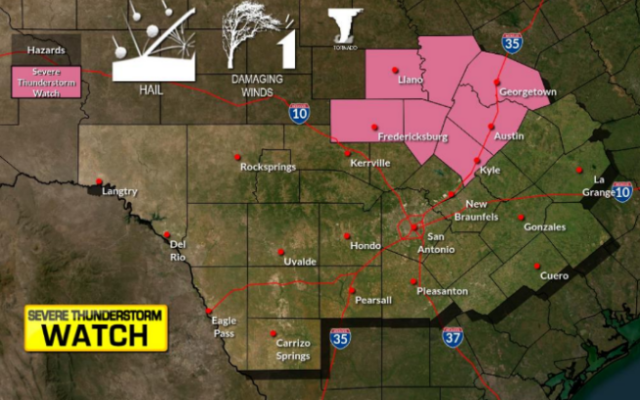How Biden’s border plans went from hopeful to chaotic

McALLEN, Texas (AP) — For about four months before President Joe Biden took office, advisers engaged in intense internal debate about how quickly they should undo his predecessor’s hardline border policies.
The answer, almost always, was that Donald Trump’s mark couldn’t be erased soon enough.
Immigration advocates on the transition team defiantly shot down a detailed memo circulated among top aides that called for turning back some migrants who cross illegally by making them seek protection in other countries. They pushed back against estimates of soaring migration flows if Trump’s policies were dismantled.
In the end, Biden recognized predictions that more migrants might come to the border, but he was firm that policies instituted by Trump were cruel and inhumane and had to be jettisoned.
Biden took office on Jan. 20. Almost immediately, numbers of migrants exceeded expectations. Plans outlined in a December document to fully resume asylum processing at land crossings were soon overtaken by events.
Children traveling alone shattered previous highs in March, making up most of the more than 4,500 people housed in temporary tents that were designed for 250 under COVID-19 standards. The Border Patrol encountered migrants in South Texas more often than ever in June and July, dashing expectations for a common summer slowdown.
In September, about 15,000 mostly Haitian refugees were camped under a bridge in the small border town of Del Rio, Texas. The chaotic scene stretched on for days as migrants waded back and forth across a river for supplies and families slept in squalor. Images of agents on horseback corralling refugees went viral.
The administration began a massive expulsion of Haitians while allowing thousands to remain in the U.S. Its uneven response after months of rising arrivals sparked sharp criticism from both the right and left, illustrating the consequences of scrapping Trump’s policies without a new asylum system in place.
Some key developments could not have been predicted by any administration, and pre-dating Biden was a major structural problem of immigration courts taking nearly four years on average to decide cases of immigrants not in custody.
But a close review of the last year — based on internal documents obtained by The Associated Press and AIM Media Texas and dozens of interviews with current and former U.S. and Mexican officials, migrants, shelter managers, advocates and others — shows how an administration stacked with seasoned immigration advocates was unprepared for the huge increase in people seeking refuge at the border. Many interviewed for this reconstruction spoke on condition of anonymity because they were not authorized or comfortable discussing private deliberations.
When presented with specifics of the reconstruction, the White House defended its record.
“After four years of the Trump administration’s chaos, cruelty and misplaced priorities, the work to build a fair, orderly and humane immigration system will take time and won’t happen overnight,” said spokesman Vedant Patel. “In a short period of time, the Biden administration continues to make considerable progress delivering on its plan.”
BROKEN ASYLUM SYSTEM
While the Biden administration would work to undo policies put in place during and after a 2019 spike in arrivals at the border, it inherited an asylum system that has been broken for years. It sorely tested Biden’s immediate predecessors.
In the summer of 2014, large numbers of unaccompanied children from Central America’s Northern Triangle countries — Guatemala, El Salvador and Honduras — showed up along the Texas border in the Rio Grande Valley, a profound demographic shift from predominantly Mexican men that created what then-President Barack Obama called a “humanitarian crisis” and left a deep impression on more enforcement-minded aides who went on to serve in the Biden administration. Spikes have since occurred periodically.
Guatemala, El Salvador and Honduras accounted for about two of every three border arrests and people who came in families made up more than half in the government’s 2019 fiscal year, both all-time highs. In a throwback to earlier times, encounters with single adults soared during Trump’s final year in office after the launch of Title 42 authority, which allowed migrants to be expelled without a chance to seek asylum on the basis of coronavirus. They also faced no legal consequences, encouraging repeat attempts.
Against that daunting backdrop, Biden took office surrounded by immigration experts steeped with advocacy backgrounds. Esther Olavarria, an immigration attorney who worked for former Sen. Ted Kennedy and the Obama administration but spent much of her career as a Miami-based organizer, took a top spot on the White House Domestic Policy Council with Tyler Moran, who was then executive director of The Immigration Hub, a group of pro-immigration strategists.
Influential, more enforcement-minded voices included David Shahoulian, who resigned last month for personal reasons as assistant Homeland Security secretary for border security and immigration, and Roberta Jacobson, a former U.S. ambassador to Mexico and career diplomat in Latin America who agreed to serve 100 days on the National Security Council as coordinator for the Southwest border.
“REMAIN IN MEXICO” WINDS DOWN
Despite concerns, Biden was adamant about his campaign promise to start reversing Trump’s border policies by ending “Remain in Mexico,” known officially as “Migrant Protection Protocols,” under which about 70,000 asylum-seekers were made to wait outside the country for hearings in U.S. immigration court.
Crossings fell sharply after Trump expanded the policy in 2019, but migrants were forced to wait in dangerous and unfamiliar Mexican border cities where finding steady work was difficult and finding attorneys was nearly impossible. Human Rights First, an advocacy group, documented 1,544 examples of violent assaults, including murder, rape, torture and kidnapping.
During the transition, advocates pushed for the policy’s immediate reversal, but consensus emerged for a more gradual winding down.
The complicated logistics of allowing up to 26,000 asylum-seekers with active cases to return to the United States and remain free while their cases wound through the courts was a high priority in the administration’s first weeks.
All records were on paper, with few working phone numbers or addresses listed, posing a challenge on how to get the word out. U.S. authorities, working closely with United Nations organizations, worried about a rush to the border exacerbating public health and security concerns — and at the same time, sending a message to asylum-seekers who had returned to Central America to make the dangerous journey back north.
The U.N. High Commissioner for Human Rights’ website for asylum-seekers with active cases went live Feb. 12 and was overwhelmed with technical glitches. Multiple dropdown boxes created confusion and led to a site redesign.
Despite the early hiccups, more than 11,000 asylum-seekers had returned to the United States by June 1, when Homeland Security Secretary Alejandro Mayorkas officially declared the policy was over after a review found it yielded only “mixed effectiveness” on border security. Others whose asylum cases were dismissed or denied under Trump were allowed in starting in late June.
As border crossings soared beyond expectations, Amy Pope joined the White House staff in March after having advised Biden on immigration during the campaign and working closely with him in 2014 when he was tasked by Obama with the unaccompanied children on the Texas border. Her mandate was to bridge internal rifts between advocacy- and more enforcement-minded aides while her nomination to the second-highest position at the International Organization for Migration awaited approval from other member nations at the U.N. agency.
UNACCOMPANIED MINORS
Some White House and Homeland Security officials were frustrated by how woefully unprepared the Department of Health and Human Services was to handle unaccompanied children. As required by law, there were supposed to take custody within 72 and then place them in a home, usually with a parent or close relative.
Participants in early interdepartmental meetings said Health and Human Services officials raised few warnings. On Feb. 7, U.S. Customs and Border Protection opened a large complex of white tents in the Rio Grande Valley, cramming more than 500 children into spaces designed for 32 under COVID-19 guidelines. Thick plastic curtains replaced chain-link fences used as barriers in the Obama and Trump administrations, but massive overcrowding was the same or worse.
“If (Health and Human Services) were able to take these kids off our hands, then it would be better for everybody,” Oscar Escamilla, acting executive officer of the Border Patrol’s Rio Grande Valley sector, said during a media tour of the Donna, Texas, facility on March 30. At the time, unaccompanied children were being held an average of 61 hours over the 72-hour limit and as long as 20 days. “We’re forced into the (child detention) business because we can’t turn them over to anybody.”
Health and Human Services belatedly sprang into action, aided by the Federal Emergency Management Agency. It opened about a dozen emergency holding centers within about a month to process unaccompanied children, renting space at a San Antonio concert venue at military bases and convention centers in Dallas, San Diego and Long Beach, California.
By late April, the department had more than 22,000 children in its custody, but even more arrived as others were released to family in the United States during asylum proceedings. July broke March’s record number of unaccompanied children.
On March 19, the Border Patrol for the first time ever began releasing families with notices to report to an immigration office within 60 days, instead of releasing them with more time-consuming notices to appear in immigration court. With processing taking up about 40% of Border Patrol resources, the agency concluded it had no choice. Troy Miller, the acting CBP commissioner, said in congressional testimony that the change “cuts the paperwork in half.”
As of Sept. 10, CBP had released 107,817 people without formal notices to appear in court, according to an internal document. Of those, 29,863, or 28%, did not report to ICE by their deadlines.
SUMMER INCREASE IN CROSSINGS
Once in office, Biden attended weekly meetings to discuss the border. However, the high-level gatherings became less frequent as COVID-19 travel restrictions eased and arrivals of unaccompanied children fell after March. Any sense of relief evaporated when the Border Patrol’s daily reports showed dramatic increases in migration flows in late June, bucking a pattern of declines during the summer heat.
The Border Patrol’s Rio Grande Valley sector stopped more than 20,000 migrants for the first week ever from July 18-24, smashing previous highs. Four of its five busiest weeks on record were in late June and July, the other one coming in March.
Brian Hastings, who heads the sector, wrote senior Border Patrol officials on July 26 that Catholic Charities of Rio Grande Valley was full and could no longer provide temporary shelter to migrants, which forced the agency to release thousands at a McAllen, Texas, bus station. He also said Health and Human Services was prioritizing children who would be easiest to place in homes over those who had been in Border Patrol custody the longest, specifically older teens and pregnant girls.
“I know that you are overwhelmed there, but we need to get (unaccompanied children) moving,” the Border Patrol’s deputy chief of operations wrote the same day. “This issue is reaching the top level of this Administration again. Just want to make sure we are full court press on (unaccompanied children). (I get it … along with everything else.)”
MEXICO SURPRISE
The Biden administration underestimated migration flows, but Mexico popped a surprise that severely undermined Title 42, which had been the most significant victory for enforcement-minded aides who fought during the transition to temporarily maintain it. Advocacy groups have repeatedly called to end the public health measure, which was invoked on grounds of preventing the coronavirus from spreading.
On Jan. 23, U.S. authorities were taken aback when Mexican officials in the state of Tamaulipas said they would no longer accept Central American families expelled from the United States.
Mexican officials in other border states continued taking expelled families, but Tamaulipas borders most of South Texas, the busiest corridor for illegal crossings by far. It resulted in crossings being even more concentrated in South Texas. The Border Patrol’s Rio Grande Valley and Del Rio sectors accounted for more than half of all migrant encounters in August, compared less than one-third a year earlier.
There was “great frustration and irritation” with Mexico at the administration’s highest levels, according to one person with direct knowledge of discussions with high-ranking officials. Border Patrol officials who work with Mexican authorities on more routine operational issues also pressed for change in long, daily conversations. U.S. authorities had trouble getting on the phone with Tamaulipas Gov. Francisco Garcia Cabeza de Vaca.
Mexican diplomats were sympathetic but said the change was linked to a child welfare law that took effect in January. The law prohibited its immigration agency from detaining children and required state officials to determine in each case what was in a child’s best interest.
U.S. officials asked Mexico to delay implementation and consider adding more shelters for child migrants to meet its detention ban. When their pleas went unheeded, U.S. officials concluded Garcia Cabeza de Vaca was trying to stymie President Andres Manuel Lopez Obrador, a political rival.
Hastings, a career Border Patrol official, contacted other sector chiefs about sending families to them. On a Sunday in early March, he secured twice-daily flights to El Paso, Texas, for families to be expelled to the adjoining Mexican city of Ciudad Juarez. But that number was cut back within days because Mexican authorities there said they could take only 100 people a day. Once-daily charter flights continued from the Rio Grande Valley to El Paso and to San Diego, where families were sent across the border to Tijuana, Mexico.
Tamaulipas authorities quickly relented by agreeing to accept families with children 7 years or older, but the impact was limited. In July, only 12% of the more than 83,000 family encounters on the border resulted in expulsion under Title 42 authority.
TOUGH TALK BUT INCREASED ARRIVALS
On Jan. 29, a federal appeals court authorized immediate expulsion of unaccompanied children under Title 42. As a father and grandfather, Biden couldn’t go forward with it, unable to bear sending minors to dangerous Mexican border cities without their parents, even while recognizing the vast majority were 15 to 17 years old.
Mexico’s reluctance to take families and Biden’s exemption of unaccompanied children largely turned Title 42 into a tool for removing single adults.
The Rio Grande Valley, a citrus-growing delta of 1.3 million people, came alive each night with inflatable rafts carrying families across the meandering river.
Smugglers lifted families into knee-deep water — some spanning three generations and with infants and toddlers — careful not to step on U.S. soil where Border Patrol agents could arrest them. Agents watched rafts go back and forth between patches of sand on gnarly riverbanks, then escorted passengers to vans that carried them to an international bridge in Hidalgo, Texas, to await processing.
If there were no agents, migrants walked under cool, moonlit skies on dirt paths amid thick brush with scorpions and snakes, looking to surrender.
Biden and senior officials talked tough — “Do not come,” Vice President Kamala Harris warned on a June visit to Guatemala, repeating herself for emphasis — but migrants who kept coming spoke of the change in presidential administrations and stories from friends and relatives who were quickly released in the United States.
Jenny Clemente, a 29-year-old Salvadoran mother, said she left home Aug. 1 after seeing TV reports showing lots of families entering the United States. Maria Serrano, a 40-year-old Salvadoran mother departed her hometown with a 10-year-old daughter on July 18 after she was told Biden would let families cross with minors. Another mother from El Salvador, who preferred not to share her name for safety reasons, packed up and left a week later with her 12-year-old daughter after hearing a neighbor was allowed into the U.S. with her child.
All of them would end up expelled to Mexico by Aug. 21, struggling to determine their next steps.
ENFORCEMENT INCREASED
By midsummer, the pendulum swung to enforcement as patience wore thin in the president’s inner circle. The White House regularly consulted with pro-immigration groups, but relations deteriorated to the point that advocates abruptly ended an off-the-record call with Olavarria on a Saturday morning in October.
In August, the U.S. began flying Central Americans deep into Mexico to hand them off to Mexican authorities who, in turn, deported them to Guatemala. U.S. authorities initially decided on 24 such flights a month, but Witness at the Border, an advocacy group that tracks flights, tallied 36 in August and 44 in September.
The administration then faced the arrival of nearly 15,000 migrants, mostly Haitians in Texas. Mexico refuses to take back anyone who is not from Mexico, Guatemala, Honduras or El Salvador, giving rise to growing numbers from other countries. Ecuadorians surpassed El Salvadorans as the fourth-largest nationality arriving at the border in July.
Mayorkas said the Haitians’ arrivals was unusually swift, but people with direct knowledge say Colombia provided intelligence that large numbers were moving on to Panama on their way to the U.S. border. One U.S. official said the Border Patrol’s acting chief in Del Rio, Robert Garcia, asked headquarters for reinforcements 2½ weeks before the Haitian crowd peaked on Sept. 18.
The U.S. has flown about 8,000 Haitian migrants back to Haiti since Sept. 19, one of its swiftest, large-scale expulsions of refugees or migrants in decades. The mass expulsions, along with treatment of some migrants at the border, led to sharp criticism of the Biden administration, even from fellow Democrats.
WHAT BORDER REFORM?
Immigration doesn’t command the attention with Biden that it did with Trump, and there is no parallel to Stephen Miller, Trump’s powerful aide whose relentless focus on immigration prompted him to call career officials several times a day for updates. Pope, a close Biden confidante, left in July for her post at the U.N. migration agency in Geneva.
A December 2020 internal document estimated the authorities could process 3,000 asylum-seekers a month at land crossings with Mexico and 12,000 a month within 180 days. It never happened.
The administration has taken modest steps, such as establishing a “rocket docket” for asylum-seeking families at the border and restoring an Obama-era program for unaccompanied children to apply in Central America to join their parents in the U.S. instead of making the perilous journey to the border. Its most ambitious proposal — adapted from the Migration Policy Institute think tank — is to assign asylum officers to the border to more quickly decide cases than immigration judges. Seemingly technical, it may have impact.
Despite that proposal, which wasn’t published until August, the administration has yet to release detailed plans of the “humane” asylum system that Biden promised during his campaign.
___
This report is a collaboration between The Associated Press and AIM Media Texas, publisher of The Monitor in McAllen, Texas, and other newspapers. Spagat, a San Diego correspondent, is the AP’s U.S. immigration beat team leader. Gonzalez is an investigative reporter for The Monitor.
You Might Also Like



